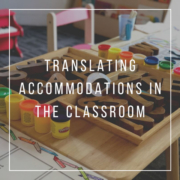???? Launching a Rockstar Back-to-School Routine: Your Ultimate Guide!
Hey there, super-parents and awesome kiddos! ???? Can you feel it? The school bells are ringing, and it’s time to switch gears from summer vibes to school-time swag. We know it’s not always easy, but fear not – we’ve got your back! ???? Let’s dive into the magical world of routines and make this school year the best one yet!
- Embracing Routine from Day One: The Toothpaste Trick ????
Imagine if you could put the toothpaste back in the tube! Well, starting a routine right from the get-go is like that – it keeps things smooth and avoids the mess. Let’s decode why kicking off with a cool routine is your secret weapon!
- The Benefits of a Set Routine: All Aboard the Success Train! ????
Guess what? Routines aren’t just for grown-ups. They’re like the superhero capes of the kid world! ????♂️ Discover all the rad perks that come with having a routine that rocks.
- Nurturing Healthy Habits: Steps to Kickstart a Successful Routine ????
Ready to get your groove on? Check out these wicked strategies to get your kid’s routine game strong:
– Set Clear Expectations ✨: Let’s make the rules crystal clear, so your kid knows what’s up. No more “But I didn’t know!” moments.
– Master Time Management ⏰: Time isn’t just a number – it’s your secret weapon. We’ll spill the beans on how to make time your BFF.
– Provide Essential Structure ????: Just like building a LEGO castle, having structure makes everything sturdy. Learn how to be the architect of your kid’s day.
– Reduce Anxiety with Predictability ????: Say bye-bye to the jitters! Routines are like comfort blankets that chase away those anxious thoughts.
– Strengthen Bonds through Trust ????: Teamwork makes the dream work! Let’s chat about how routines can be the glue that sticks your fam together.
- Flexibility Amidst the Chaos: Adapting and Thriving ????️
Life’s a rollercoaster, right? But guess what – you’re the fearless rider! ???? Find out how to keep your routine cool, even when things go topsy-turvy.
- Practical Steps to Launch Your Routine: From Calendar to Collaboration ????
Ready to rock? Let’s get hands-on:
– Create a Family Calendar ????️: Time to unleash your inner Picasso with a colorful family calendar. It’s like art and organization had a baby!
– Encourage Responsibility ????: Middle-school peeps, this one’s for you! Step into the spotlight by planning your own activities. ????
Conclusion: ????
Alright, legends, it’s go time! ???? As the new school year zooms in, grab the chance to create an epic routine. You’re the director of this blockbuster, and routines are your superstar actors. With a dash of flexibility and a sprinkle of fun, you’re all set for an unforgettable ride. Let’s make this year a routine-tastic adventure! ????????????????












